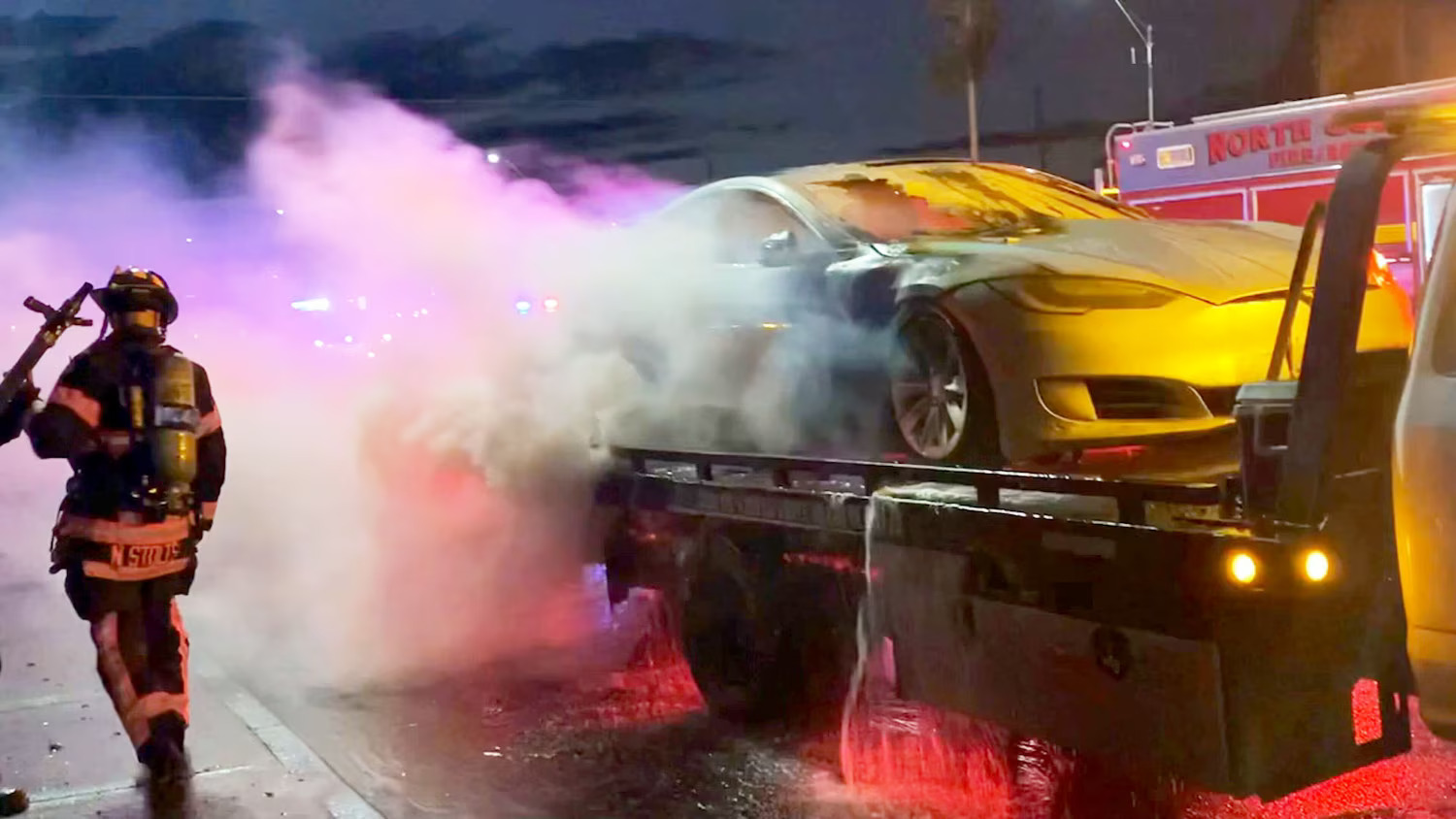
Oct 11, 2024
Flooding poses a significant risk to hybrid and electric vehicles, especially in the midst of Hurricane Milton. While avoiding water damage to your car is ideal, it’s not always possible, and understanding what to do in the event of water damage can potentially save your vehicle from further damage. Let’s discuss what to do with a water-damaged car and how to avoid water damage in the first place.
1. Preventive Measures Against Water Damage to Your Car
To protect your car from flood damage, you can take proactive measures that minimize the risk of exposure:
- Get to Higher Ground: When a major weather event is expected, relocate your vehicle to higher ground. Familiarize yourself with your city’s evacuation and emergency parking plans to know the best places to move your car in a flood-prone area.
- Cover Your Car: Invest in a waterproof car cover, essentially a large protective bag that can shield your vehicle from floodwaters. These covers are designed to keep water out and can be a helpful precaution in areas with frequent flooding.
- Seal All Openings: Make sure all windows, doors, the trunk, and any sunroof are securely closed. If any seals are damaged or cannot be closed properly, use plastic bags or tarps to create a temporary barrier. This can prevent water from entering through vulnerable points and causing internal water damage to the car.
2. Steps to Take If Your Car Gets Flooded
Even with precautions, flood damage can sometimes be unavoidable. If your car ends up in floodwater, quick action is essential to assess the situation and begin recovery. Any water damage to a battery will typically render the battery damaged and likely unrecoverable and a loss. However, it’s important to address is immediately to prevent further damage or fire.
- Survey the Damage: Determine how deeply the car was submerged and whether the water was freshwater or saltwater, as saltwater causes more corrosion. Do not attempt to start a car that has been fully submerged. This could lead to severe engine damage.
- Keep an eye out for danger signs: A submerged EV or hybrid will not electrify the water around it but watch for bubbles coming from the battery, which may be a sign of leaking toxic gasses. And look for signed of smoke, popping, whistling, hissing or flames as this may be a sign of fire. If you observe either bubbles or signs of fire, move away and contact the fire department. Also, do not touch any exposed wires or components.
- Document the Damage: Take detailed notes and photos of all visible damage. This documentation will be critical when filing an insurance claim, providing evidence of the extent of the flooding.
- Dry Out Your Vehicle: Open all doors and windows to let the car air out, and use fans or dehumidifiers to speed up the drying process. If the interior is soaked, consider removing wet items, including carpets and upholstery, to avoid mold growth. For those with asthma or mold allergies, driving a flooded car that hasn’t been properly ventilated may pose health risks, and it’s advisable to seek professional help with drying out the interior.
- Tow Your Car to Higher Ground: If the floodwaters are still present or your car is stranded in a low-lying area, arrange for a tow truck to move it to a safer location.
- File an Insurance Claim: Contact your insurance provider to file a claim, and schedule an assessment with an adjuster. They will inspect the damage and determine the repair costs or total loss settlement.

3. If Your Car Is Unrecoverable or Totaled
In severe cases where your car is swept away by floodwaters, contact the local police or the unclaimed auto department to check if your vehicle has been recovered. Regardless of the outcome, file an insurance claim to be reimbursed for the vehicle's actual cash value (ACV) or the necessary repairs.
If the car is deemed a total loss, comprehensive insurance typically covers the ACV. For those with gap insurance, the remaining loan balance may also be covered.
4. When Your Flooded Car Isn’t Totaled
If the car is not declared a total loss, repairs can be made under your comprehensive coverage after the deductible. Depending on the extent of the water damage, restoring a car may involve substantial work, including replacing damaged components like the electrical system, seats, or flooring. In some cases, the car may be recoverable, but the battery may need to be replaced.
Restoring Your Car's Hybrid or EV Battery
Batteries and water don’t mix well. Floodwater can wreak havoc on your car’s systems, including the hybrid or electric battery. If water damage impacts the battery’s functionality, Hybrid Battery 911 can help you get your car back on the road. We specialize in replacing damaged hybrid and EV batteries with new or reconditioned hybrid battery packs, getting your car back on the road, often far less than the cost of taking your car to the dealership. Call us today to schedule your appointment with a professional battery installer near you.

